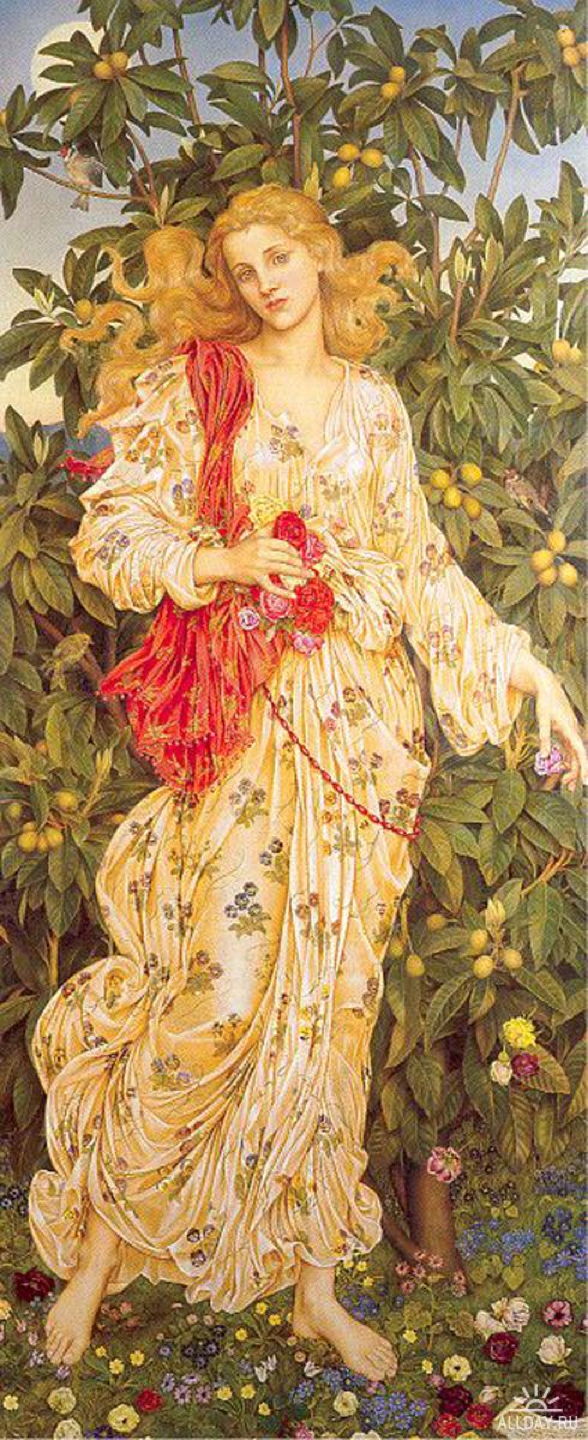With two major paintings showing complex if not enigmatic accounts of Chloris/Flora, she has become one of the most painted classical deities, out of all proportion to her tiny role in the pantheon, and rivalling Aphrodite/Venus. But few of those who followed Botticelli and Poussin have attempted any comparable narrative or depth.

In 1712-16, Sebastiano Ricci’s far simpler Flora stands Zephyrus behind her, and there are sundry winged cupids and accessory winds, as well as a display of flowers. But intricate references to Roman myth have faded.
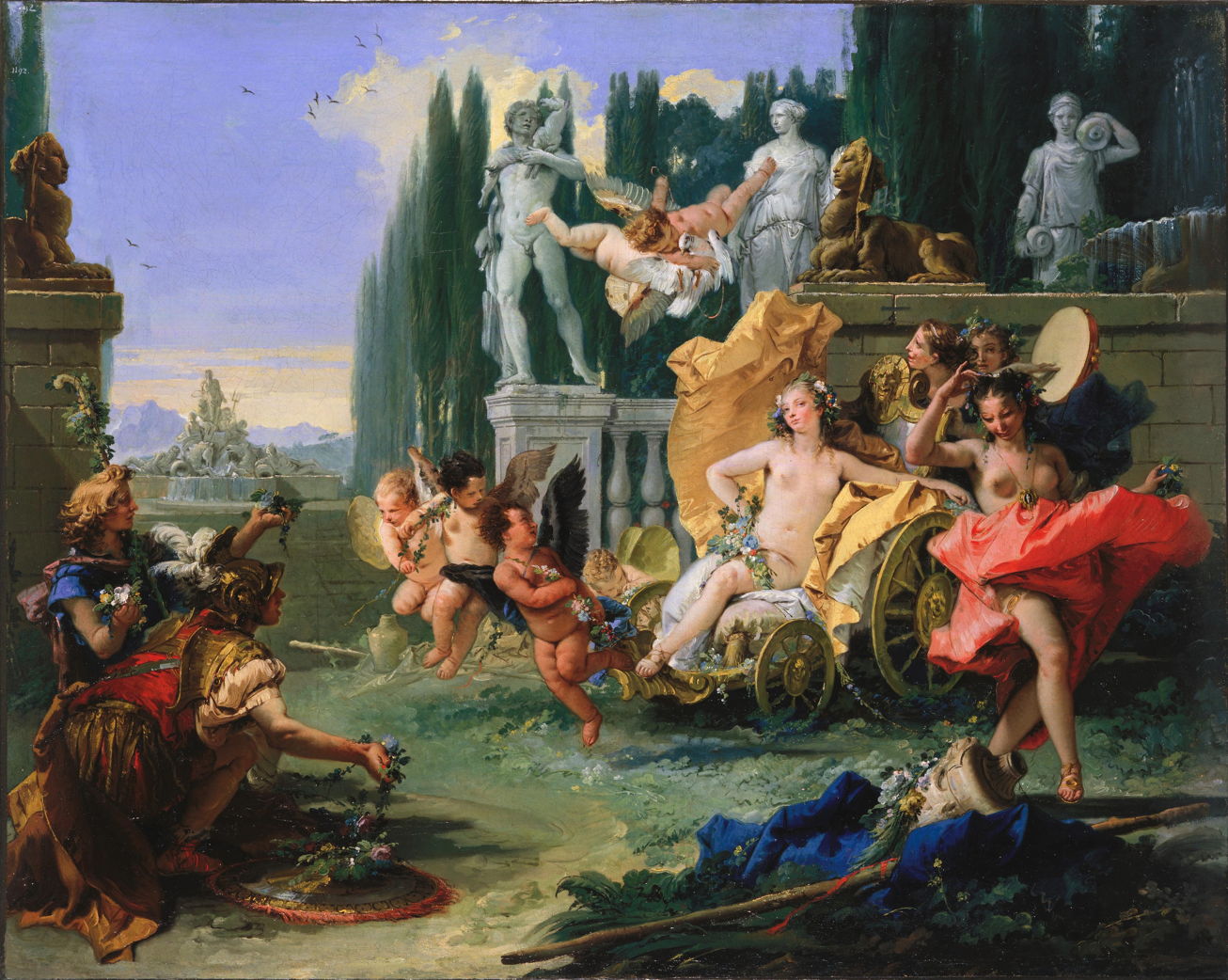
In the mid 1740s, Tiepolo painted two accounts of Flora, the first probably being The Empire of Flora from about 1743, shown above. She is here seated in a chariot being drawn by winged cupids or winds, brazenly showing off her naked body like a down-market version of Venus. There seem to be precious few references to classical accounts, or those of Botticelli and Poussin.
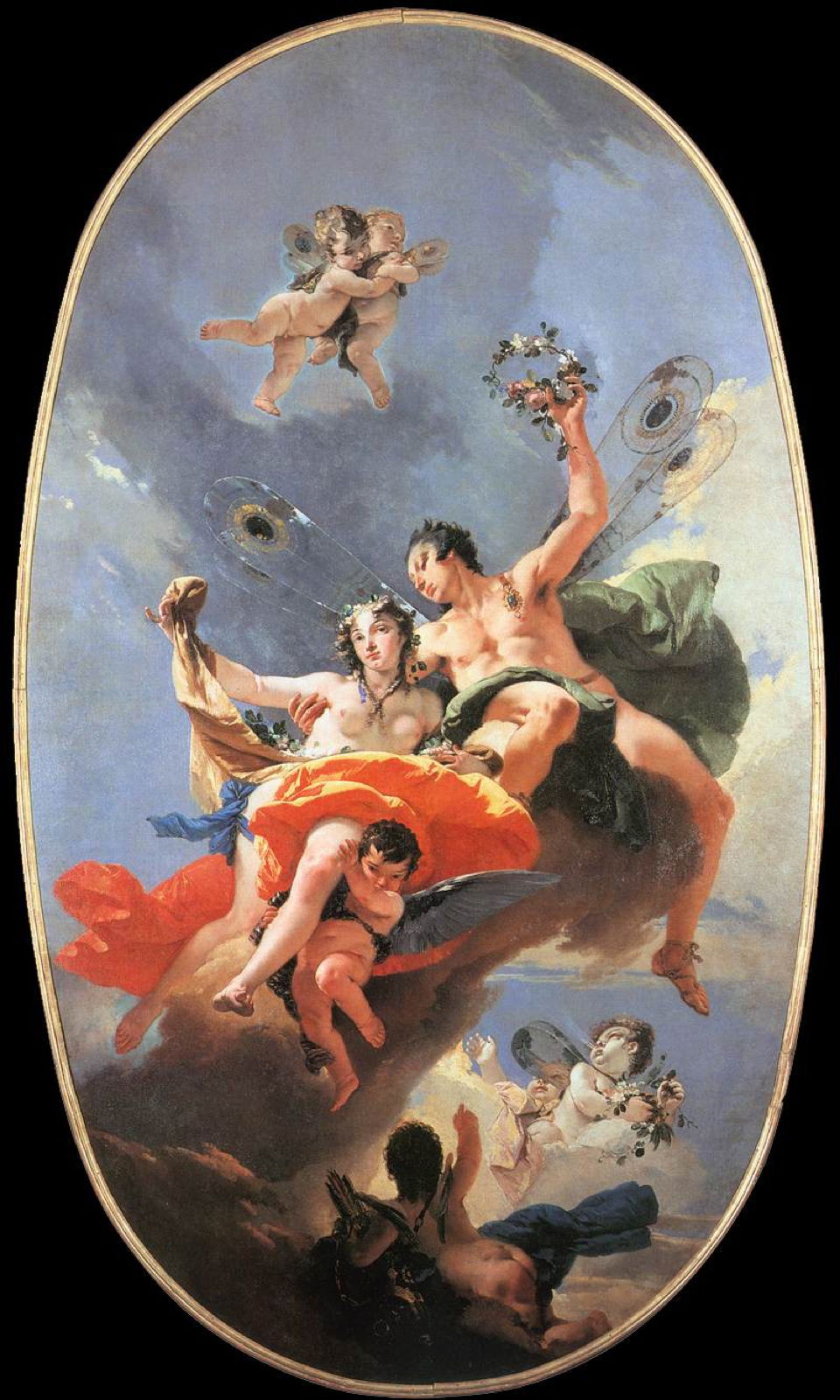
Tiepolo’s second painting, of The Triumph of Zephyr and Flora from 1734-35 refers to Ovid’s account, thus Botticelli’s Primavera, with Zephyrus in flight with his arm round Flora, just about to crown her with a garland. Splendid though these two paintings are, the rich mythical narrative has fallen by the wayside in preference for fleshly romance.
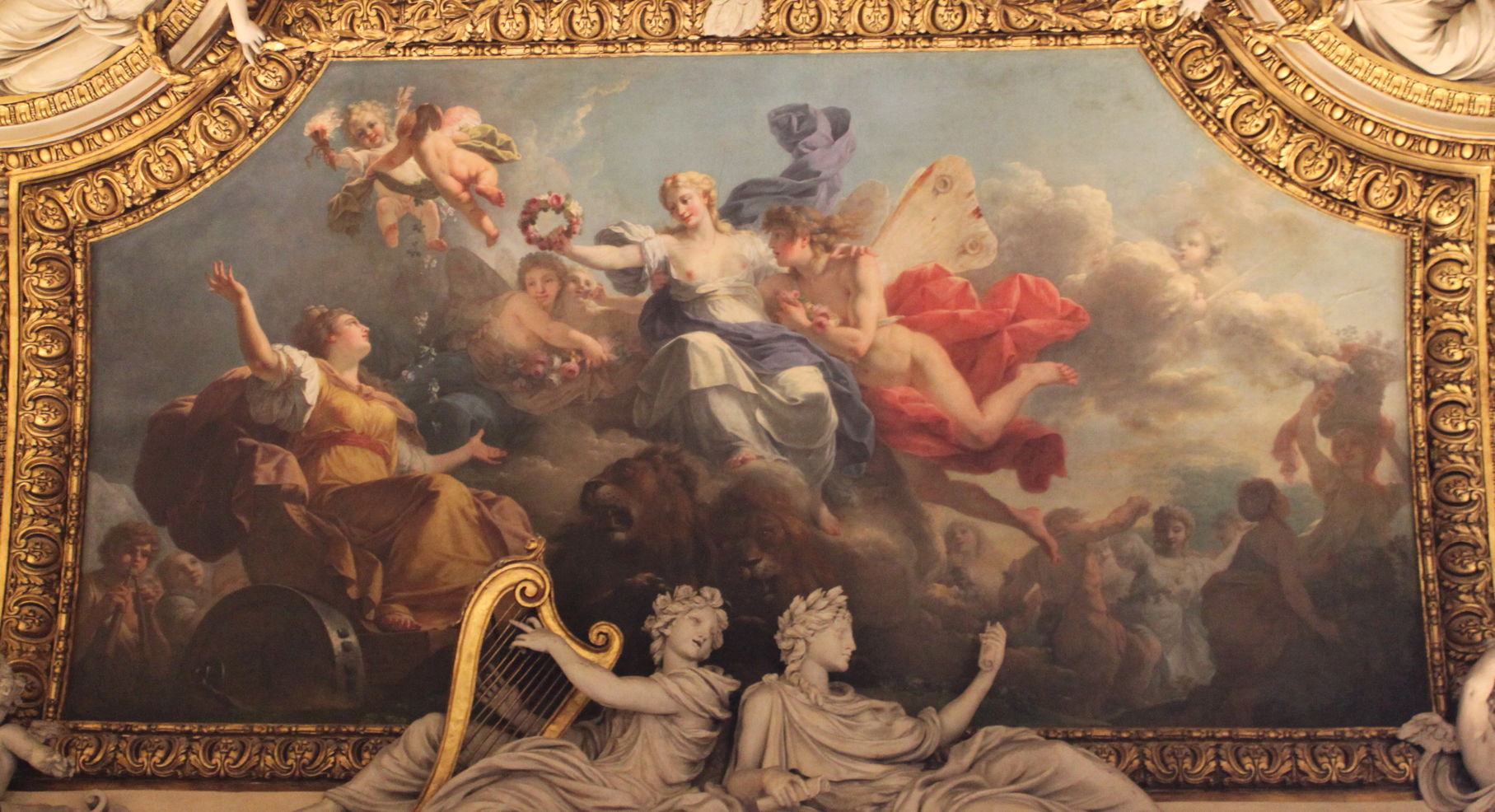
Fifty years later, Antoine-François Callet painted this allegory of Spring (c 1781). There’s no shortage of figures, with Flora at its centre, her breasts bared, and a rather effeminate Zephyrus under her left arm. At the lower right are the three Graces, dancing with their hands held high, but at the lower left is the goddess of the harvest Demeter/Ceres, in her chariot drawn by lions. With her daughter Persephone/Proserpine, Ceres was often allied with Flora in their common association with plant growth and fertility.
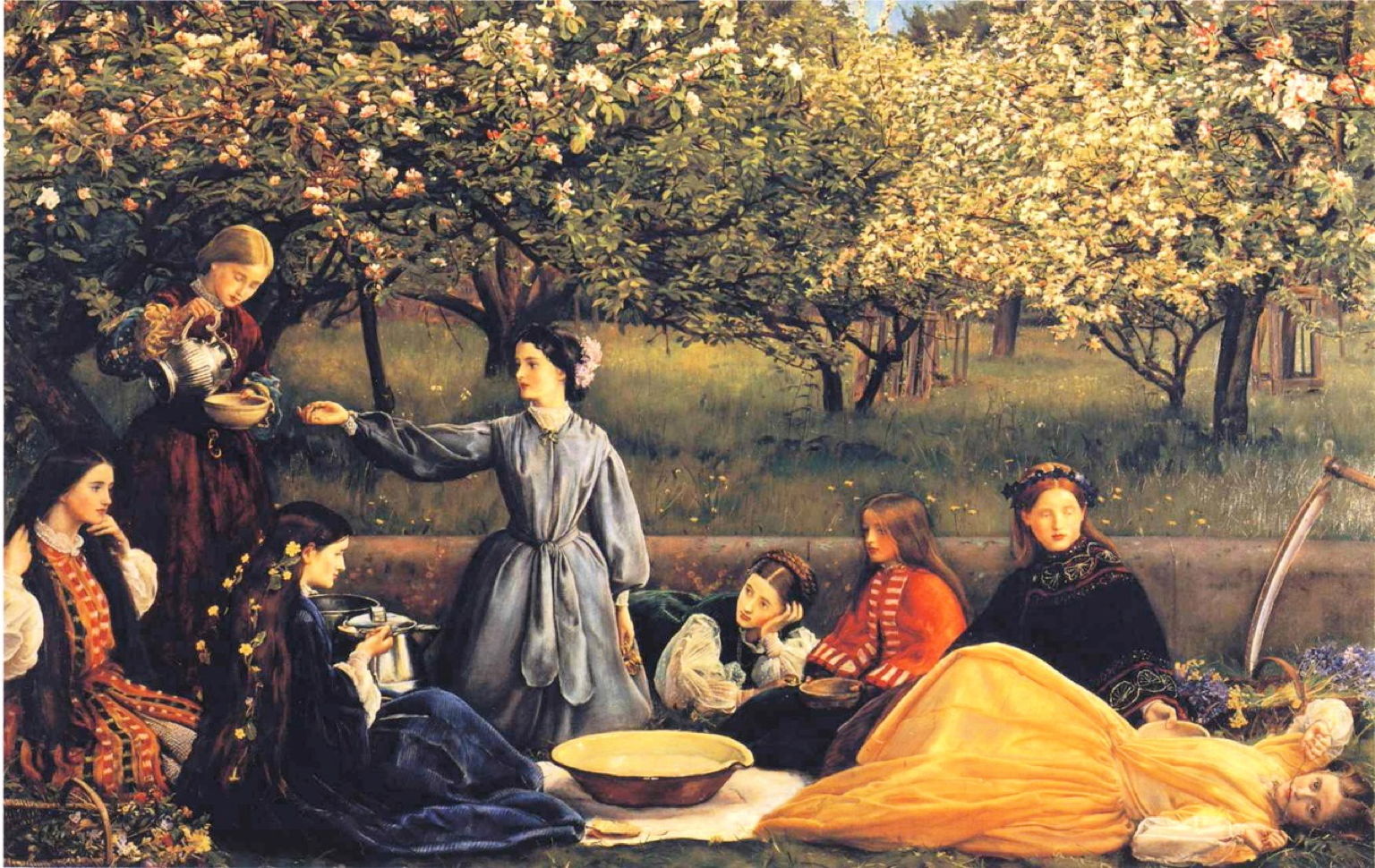
In the late nineteenth century, Flora and her Spring became popular again in paintings, particularly with artists associated with the Pre-Raphaelite movement. John Everett Millais’ Spring, also known as Apple Blossoms, from 1856-59 may contain subtle allusions to Primavera and classical myth.
At the far right, beside this group of elegant young women, is the scythe of Father Time. Two of the group have baskets full of Spring flowers, and three have flowers in their hair. Tempting though it may be to try to see three Graces and Flora herself, I fear that is as far as Millais went.
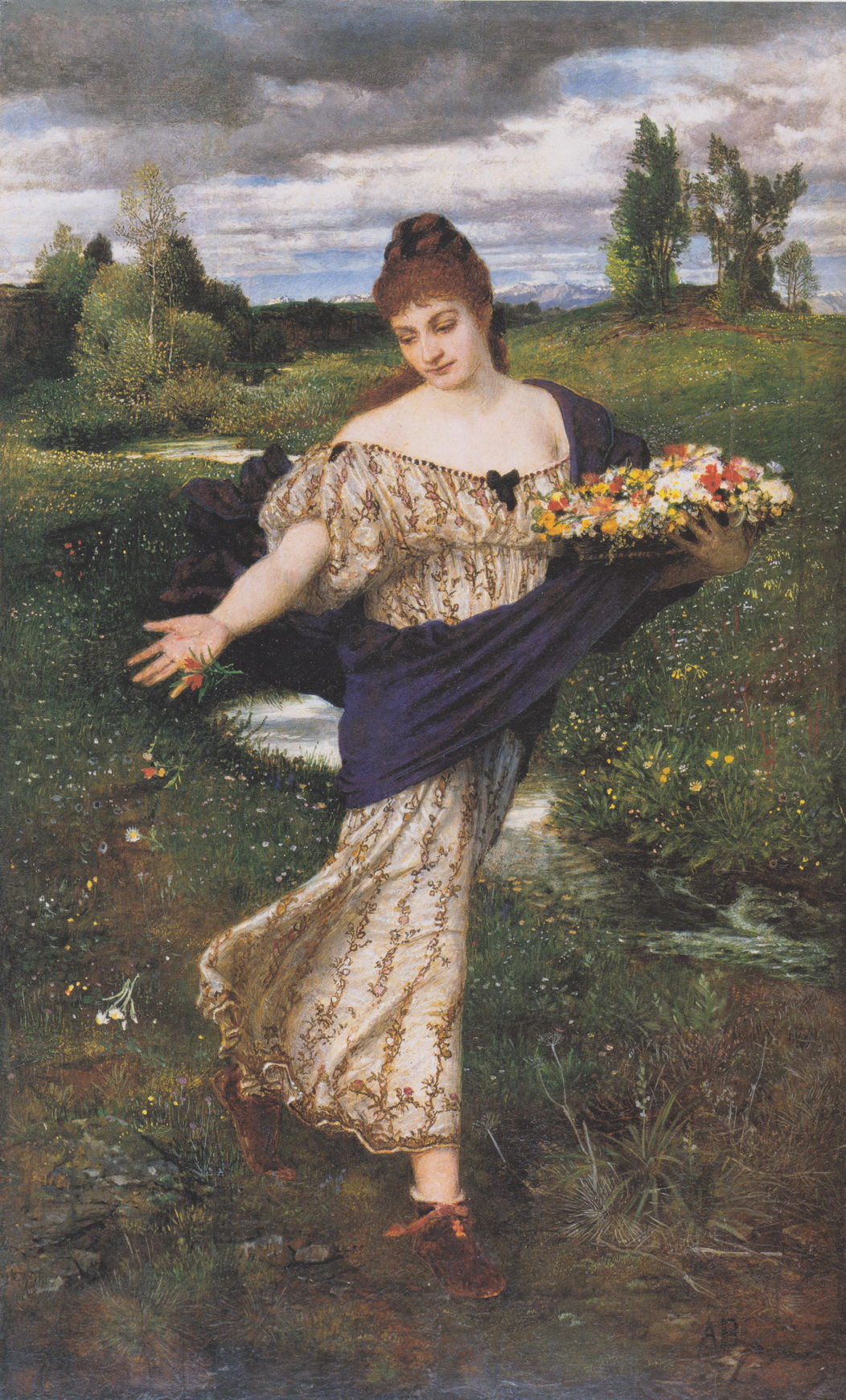
Others, like Arnold Böcklin, painted simpler non-narrative figures of Flora (1875) scattering Spring flowers.

Henrietta Rae’s Zephyrus Wooing Flora (1888) is a delicate ‘faerie’ painting sweetened out from Primavera, and hardly based on Ovid’s account of abduction, rape and metamorphosis.

John Roddam Spencer Stanhope’s panel showing Flora (1889) is simple apart from its decorative row of angels, and the abundance of flowers.
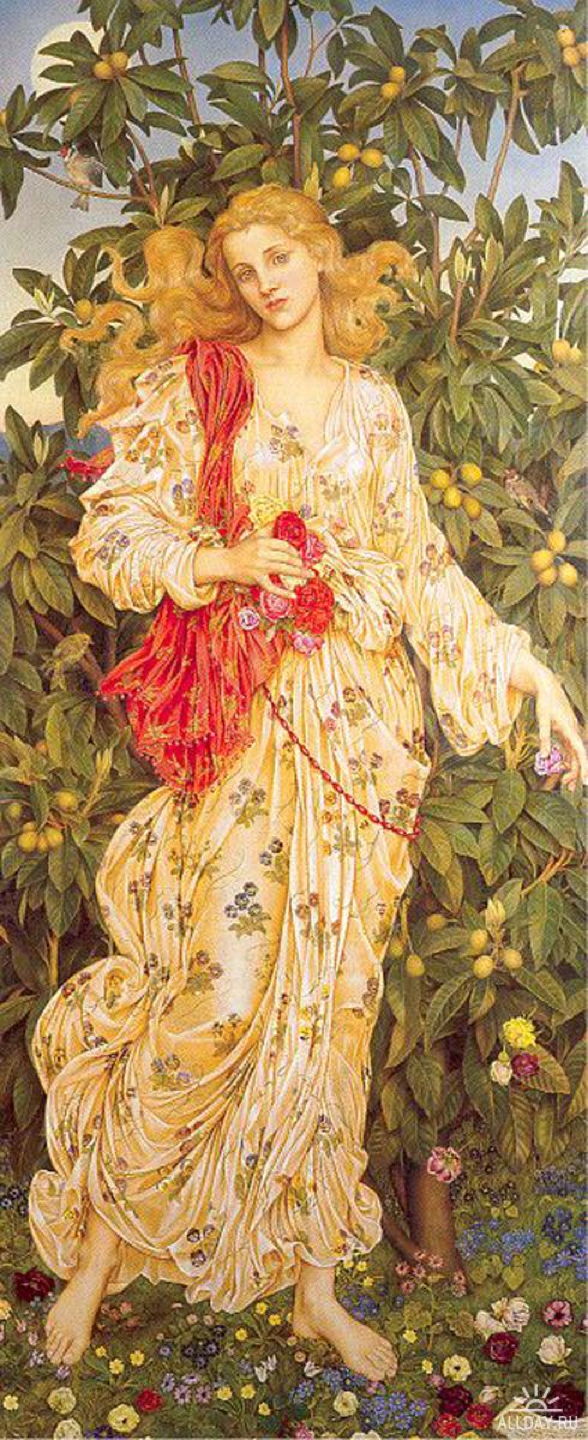
Evelyn De Morgan’s Flora from 1894 is again a single figure removed from the narrative, although she at least establishes clearer visual links with Primavera.
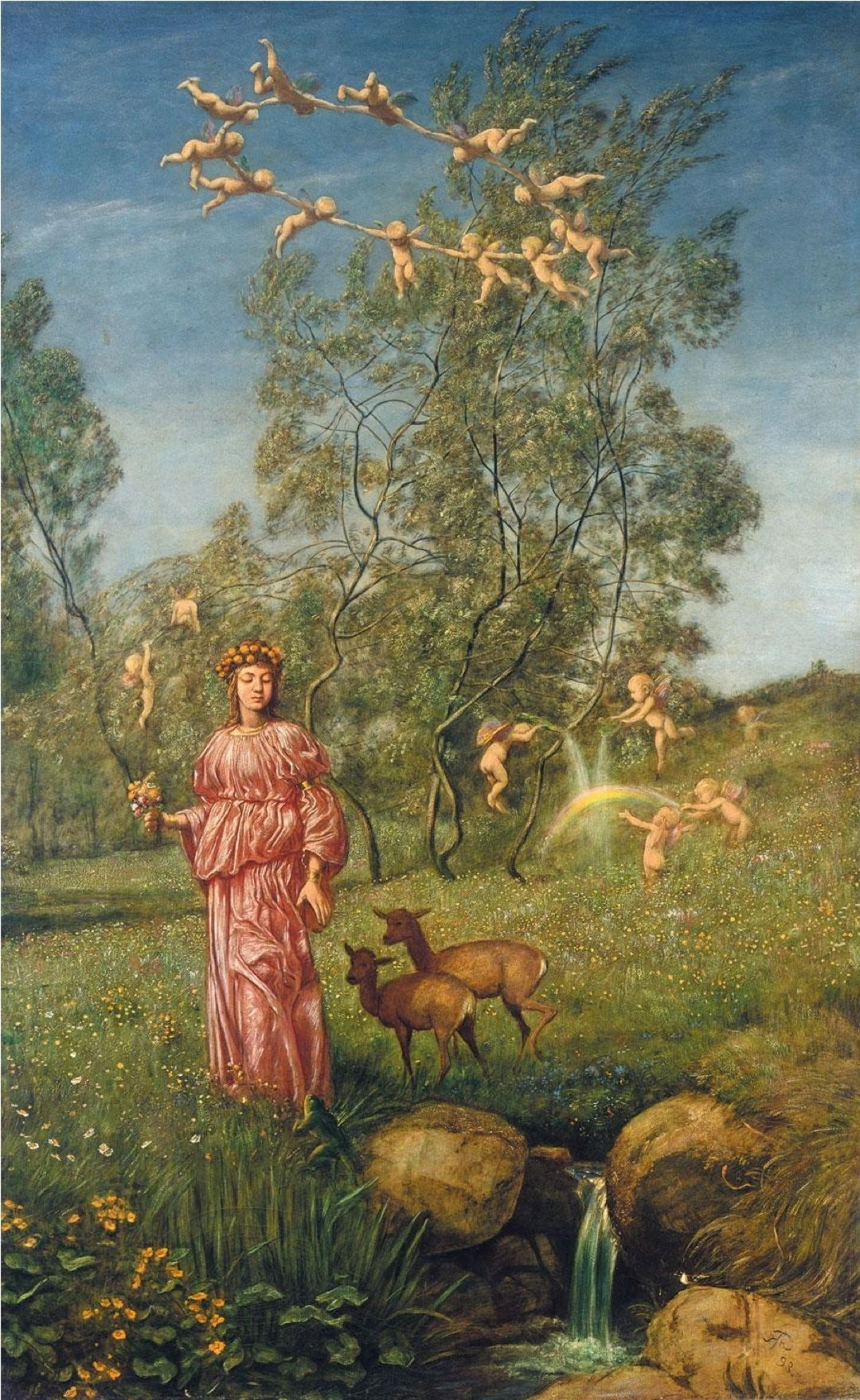
Hans Thoma’s Spring Fairytale, An Allegory (1898) shows a woman who appears to have been influenced by Botticelli’s figure of Flora. She’s surrounded by meadow flowers, two small fawns, and sundry winged putti. Thoma seldom if ever depicted his putti with bird-like wings, but seems to have preferred the more unusual insect or butterfly wings, with their rich colours.
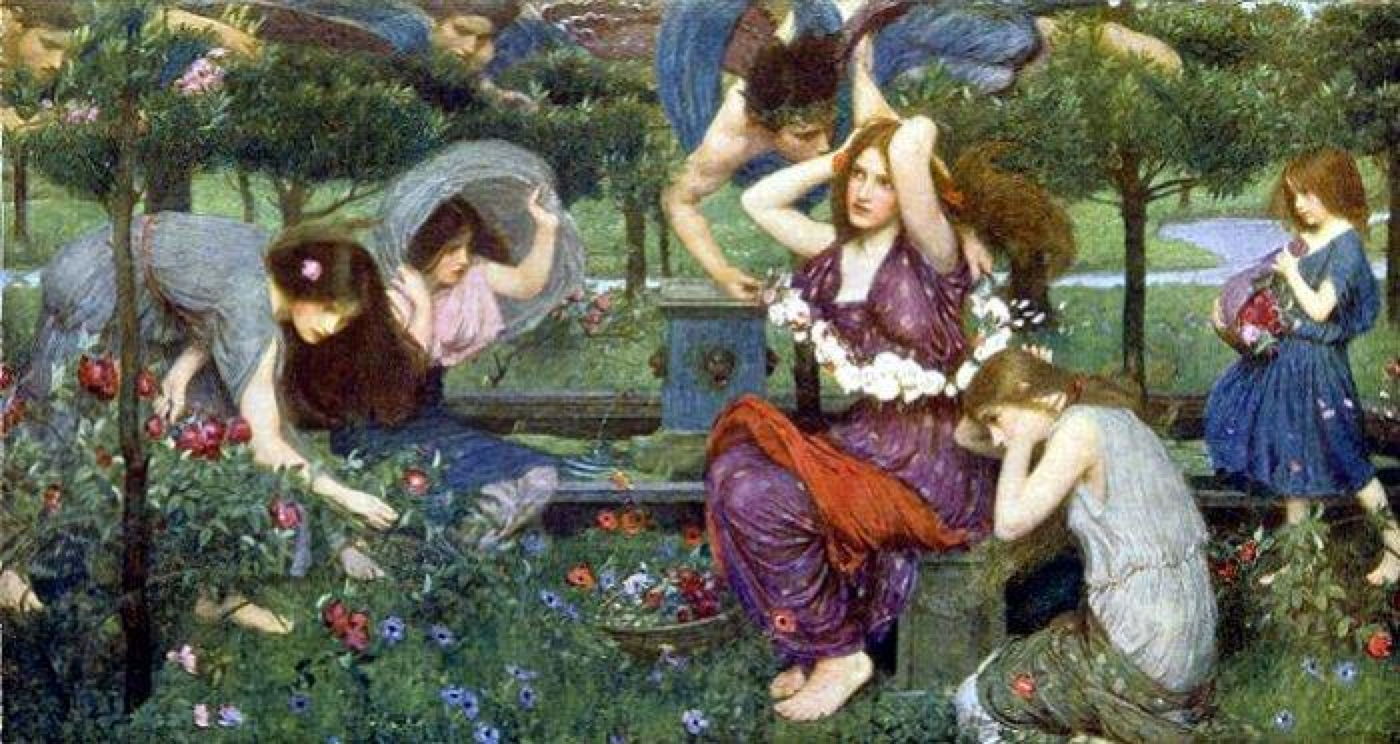
In John William Waterhouse’s Flora and the Zephyrs, from 1898, Flora sits, arms raised, to the right of centre as Zephyrus kisses her right arm from above. With her are the three Graces (not the Hours with their colourful clothes), who rather than dancing together are gathering the flowers to braid into their hair. Other winds are seen over the treetops. I apologise for the poor quality of this image.
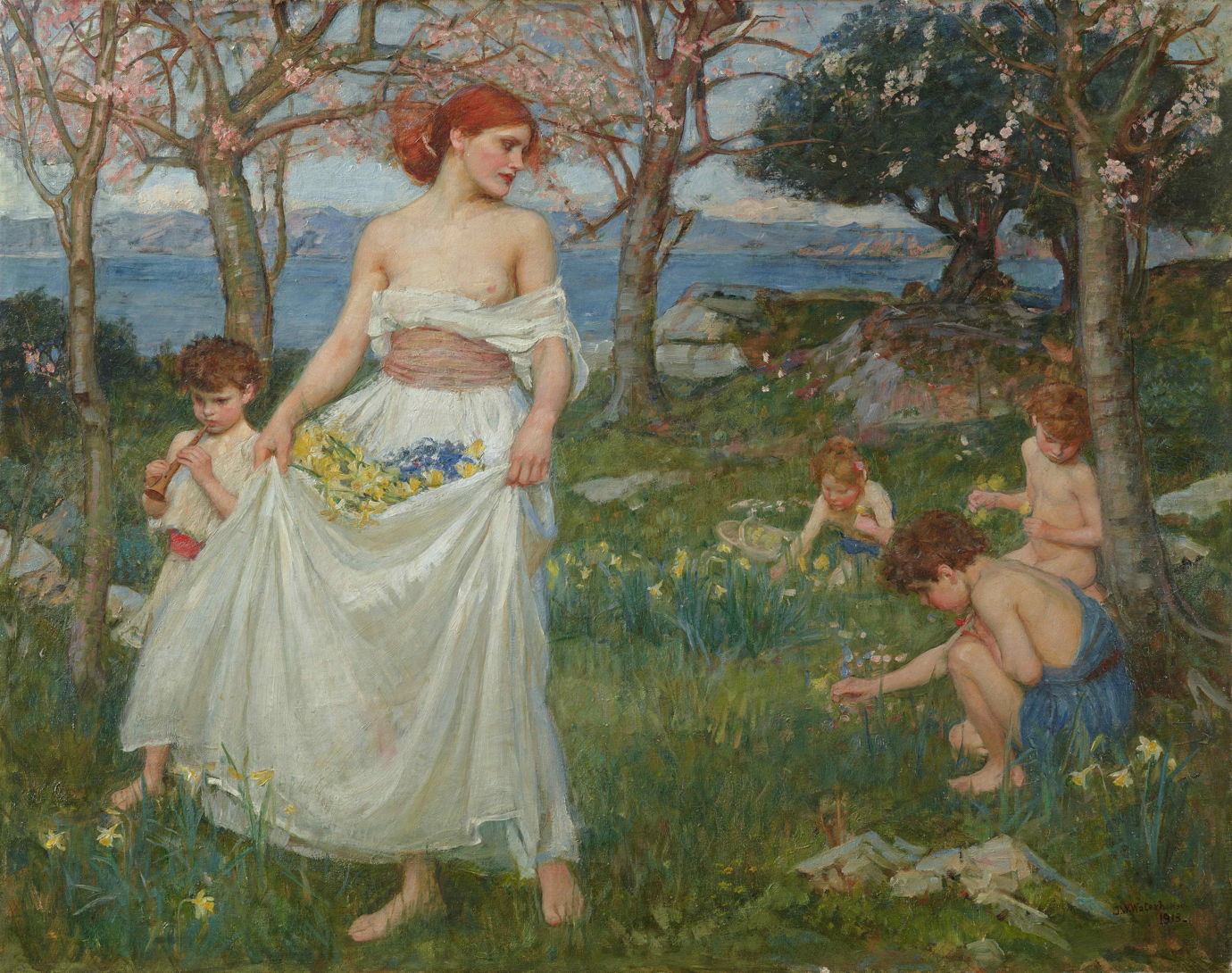
When Waterhouse revisited this theme more than a decade later, in his A Song of Springtime (1913), he sadly stripped away several of its narrative references, but showed Flora with breasts bared, and a skirtful of daffodils or narcissi – perhaps a cross-reference to Poussin and his figure of Narcissus in The Empire of Flora. The Graces have here been replaced by young children.
Chloris is perhaps the most painted nymph of all.

